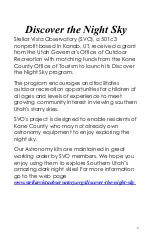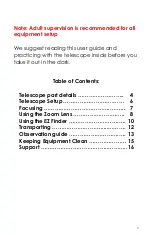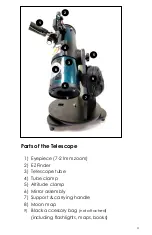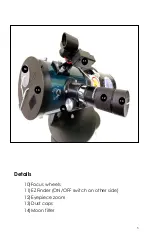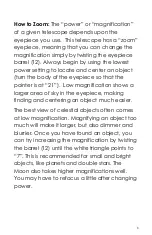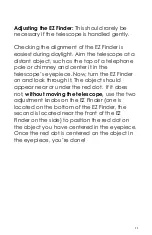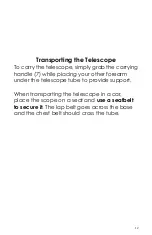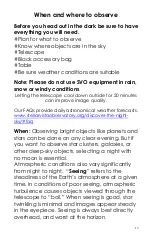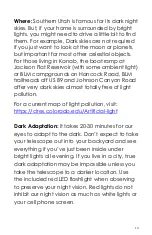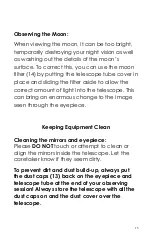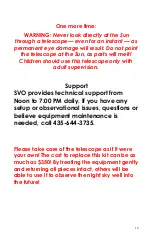
13
When and where to observe
Before you head out in the dark be sure to have
everything you will need.
#Plan for what to observe
#Know where objects are in the sky
#Telescope
#Black accessory bag
#Table
#Be sure weather conditions are suitable
Note: Please do not use SVO equipment in rain,
snow or windy conditions
Letting the telescope cool down outside for 20 minutes
can improve image quality.
Our FAQs provide daily astronomical weather forecasts.
www.stellarvistaobservatory.org/discover-the-night-
sky/#faq
When:
Observing bright objects like planets and
stars can be done on any clear evening. But if
you want to observe star clusters, galaxies, or
other deep-sky objects, selecting a night with
no moon is essential.
Atmospheric conditions also vary significantly
from night to night. “
Seeing
” refers to the
steadiness of the Earth’s atmosphere at a given
time. In conditions of poor seeing, atmospheric
turbulence causes objects viewed through the
telescope to “boil.” When seeing is good, star
twinkling is minimal and images appear steady
in the eyepiece. Seeing is always best directly
overhead, and worst at the horizon
.


